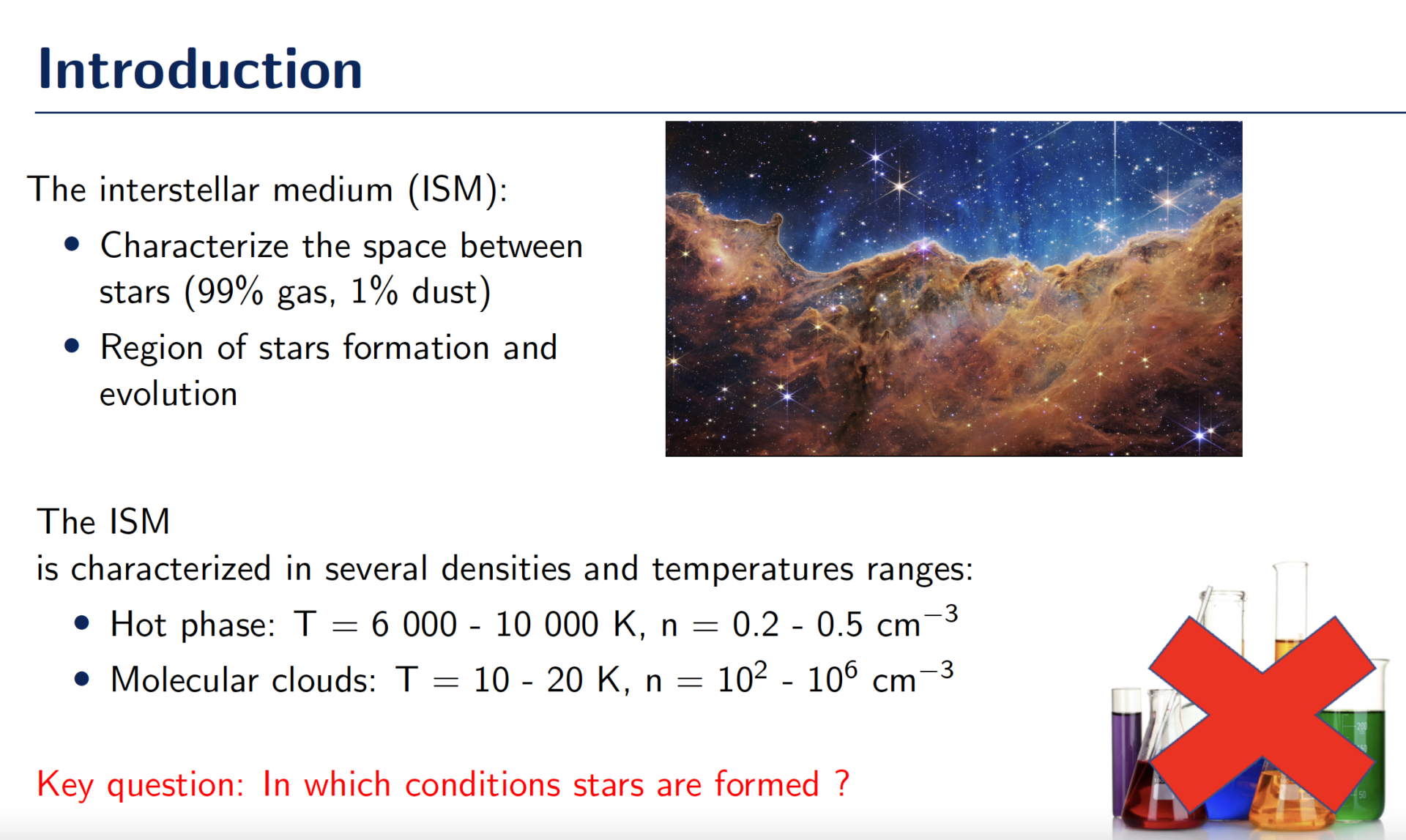by Amélie Godard Palluet & Paul Pirlot Jankowiak & Marie Gueguen, on
Presentation of the event

The PhDay was held on November 29th in University of Rennes 1. During this scientific day, the PhD students, and some post-docs of the Institut de Physique de Rennes (IPR) presented their thesis work in a popularized and accessible way, in the form of posters and oral presentations.
A. Godard Palluet, P. Pirlot Jankowiak presented their thesis work, and M. Gueguen discussed the sustainability of a model in science.
A. Godard Palluet and B. Desrousseaux were members of the organising committee of this event.
Methodology and uncertainties in astrochemistry - A. Godard Palluet, and F. Lique
In astrochemistry, one of the challenging goal is to compute accurate collisional data from which astrophysicists can derive the abundance of chemical species in space. The problem is that an exact quantum calculations of these rates is not reachable in terms of computational time and memory. Therefore, approximations must be made, from which uncertainties of different nature will arise. To measure the accuracy of these data, and validate our methodology, they should be compared to experimental measurements.
However, the chemical species in space are not always stable enough to be reproduced experimentally. Then, how can we be sure that we are not completely wrong ?
I will show in this presentation results that we obtained for the CO2-He prototypical system, which was well studies over the years so that we could use it to validate our methodology. Then, we extrapolated this methodology to the brand new CCS-He system.

Collisional excitation of radical species in the intersterllar medium - P. Pirlot Jankowiak, and F. Lique

The interstellar medium characterizes the space between stars. It is composed of 99% of gas and 1% of dust. Although it represents only 0.5% of the total mass of the galaxy, it is in this environment that stars and planets are formed and evolve. Its density and temperature conditions are difficult to reproduce on Earth, which makes it a unique laboratory in which certain chemical species unstable on Earth can be formed. These species are then detected by terrestrial and space telescopes as electromagnetic spectra. The exploitation of these spectra allows then to describe the physical and chemical conditions of the astrophysical environments in which the stars and planets evolve.
The modeling and the interpretation of molecular spectra require the knowledge of the radiative and collisional processes of energy transfer between chemical species. However, among the 300 molecules detected up to date, only about fifty species have theoretical and experimental data. Some classes of molecules such as radical species require methodological and numerical development to provide reliable data for the modeling of spectra and to determine the physical and chemical conditions of the interstellar medium.
This thesis work consists in quantifying the collisional excitation of these radicals in astrophysical media. The complexity of the energetic structure of these molecules is a theoretical challenge. It requires the development of methodological and numerical tools to characterize these physical and chemical processes as precisely as possible. The collisional data provided are expected to interpret the observations and corroborate experiments performed in laboratory.
How to evaluate scientific models in context of high uncertainties - M. Gueguen

In context of high uncertainties, from epidemiology to climate science or astrophysics, scientific models are developed in iterative ways. This means that the idealizations and simplifications on the basis of which a model is developed can only be estimated on the basis of an initial model, or template model, that we know will not match observations. Only on this basis can a model be understood and further refined.
The discrepancy between observations and the model's predictions is exactly what permits to identify the elements whose impact is the most significant for the model's outputs, and whose accuracy must be improved in priority. Hence, a discrepancy between predictions and observations is not necessarily an indication that the model fails, on the contrary. Rather, it is a guide for further improving it when data are lacking and part of the process of model building. Yet, the last years have shown how difficult it is to communicate this process to a general audience, and to convey how models should be evaluated at different stages of their development, even more so when models are developed in emergency situations that require fast decision-making. In this talk, I will highlight the main phases of model building, based on case studies from astrochemistry.